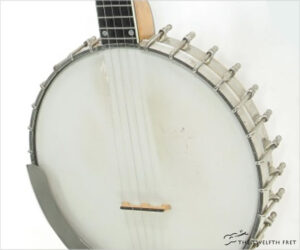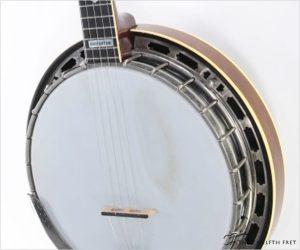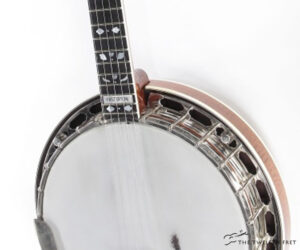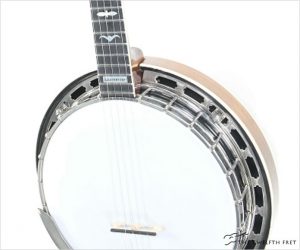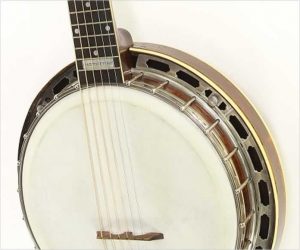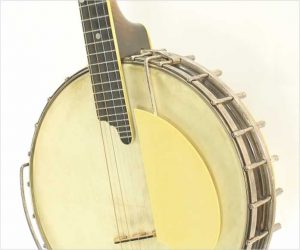Following its original form as an A.C Fairbanks product, the Fairbanks Vega Whyte Laydie featured a natural finish on the maple neck and pot which provided its name. However, the real innovation was the Whyte Ladyie tone ring and bracket band, reducing the number of holes drilled and adding mass to the pot.
Mastertone
The Gibson RB-250 Mastertone was the working-musician’s banjo for decades and offers that classic Gibson sound with the “Snap” to the treble attack that only Gibsons have. This is essentially the same banjo as the famous Gibson RB-3 without the Wreath inlay.
This instrument has sold
MORE →Built from 1994 until a devastating flood hit Nashville in 2010, the Gibson Earl Scruggs Standard banjo reproduced the classic banjo that used by Scruggs. At first, the model was just named ‘Earl Scruggs’. The word ‘Standard’ was added in 1992, because two newer Scruggs models were introduced for the 1992 year, the ’49 Classic and the Golden Deluxe.
This instrument has sold
MORE →The Gibson RB-250 Mastertone was the working-musician’s banjo for decades and offers that classic Gibson sound with the “Snap” to the treble attack that only Gibsons have. This is essentially the same banjo as the famous Gibson RB-3 without the Wreath inlay, Gibson built a few RB-250 banjos every years from 1949 until 2010, when a devastating flood in Nashville destroyed Gibson’s Banjo and Mandolin facilities.
This instrument has sold
MORE →The first of the Gibson GB series of 6-string Mastertone Guitar Banjos appeared in 1918, as the GB-3 and GB-4. The GB-1 and GB-6 appeared in 1922, and by 1940, production had completely ended. The GB-5 was built only during 1925. These models were influenced by the popular Paramount banjo designs.These instruments are perhaps comparable in intent to the Resophonic guitars that were introduced by National just a few years later – meant to be used in fairly loud ensembles, often with horns, playing the Dixieland jazz that was all the rage.
This instrument has sold
MORE →Here’s a lovely older instrument, built around 1924 – The Gibson TB4 Snakehead, trap door tenor banjo, with Maple for the neck, rim and folding ‘trap door’ resonator. This fine instrument has its original parts, though the case is long gone, and was built at the end of the Lloyd Loar era (1911 to end of 1924), which produced many historic innovations. The Gibson TB4 was part of the TB or Tenor Banjo series introduced in 1921 as Gibson attempted to stabilize its place in the banjo market.
This instrument has sold
MORE →